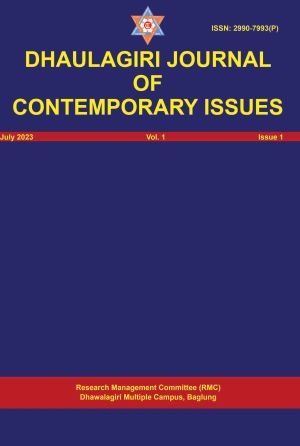Examining +2 Level Students' Email Writing Proficiency: A Critical Analysis and Recommendations
DOI:
https://doi.org/10.3126/djci.v1i1.58626Keywords:
communication, current trends of writing, EFL classes, email writing, intermediate studentsAbstract
This paper examines +2 level students’ email writing proficiency critically and recommends the necessary tips for improvements. Email writing has become a crucial aspect of teaching and learning activities in EFL classes. It is the quickest means of communication for bulk messaging. The practice of post offices is almost obsolete. The postman used to deliver letters to people from one place to another place and the delay was common. Now, in the digital age, email writing has become the fastest means of communication for disseminating the messages to the recipients. Despite this, both the teachers and students do not take the email writing process as a crucial matter. The findings of the study show that +2 level students write emails like a letter in their exam papers. They can do the same in reality as well. Their teachers should instruct them properly. Email writing is not as simple as the teachers and students think. Email writing does not only inform, it also persuades the recipients. The study aims at empowering the +2 level students’ email writing proficiency by suggesting with required methods, techniques and tips. Their skills are not well patterned because their teachers do not instruct them sincerely. Therefore, both the teachers and students should tackle this email writing with the exact formats and methods. The study is qualitative research and it adopts the descriptive survey methods for the analysis of their email writing skills.
Downloads
Downloads
Published
How to Cite
Issue
Section
License
Copyright (c) 2023 Raj Kumar Gurung

This work is licensed under a Creative Commons Attribution-NonCommercial 4.0 International License.
This license allows others to use, distribute, and build upon your work, as long as they provide attribution to you as the original creator. However, the license restricts commercial use of the work, meaning others cannot use it for commercial purposes without seeking additional permissions or licensing agreements.




